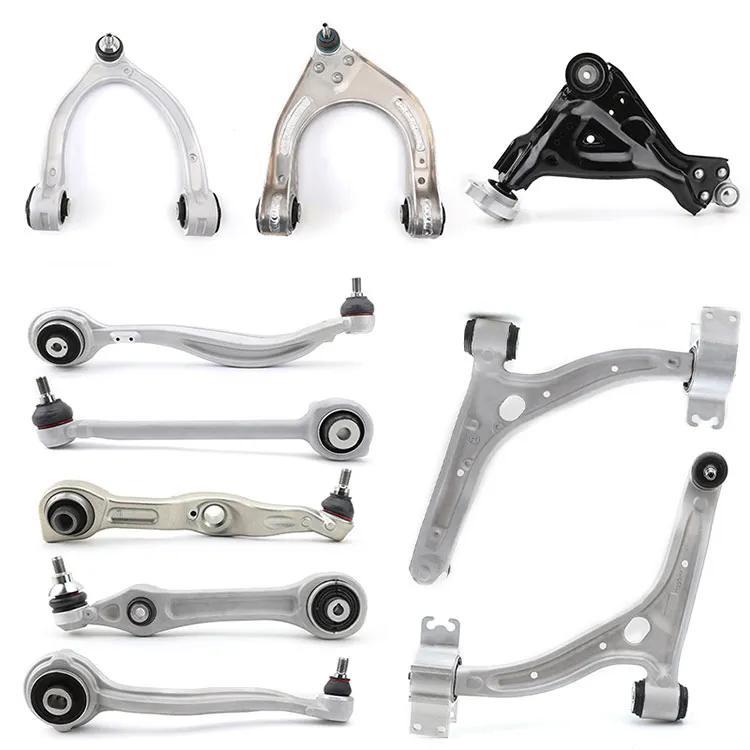Rear Control Arms: Common Questions Answered
2024-11-04
Rear control arms are essential components of a vehicle’s suspension system, contributing to stability, handling, and ride comfort. These parts help control wheel alignment and manage how the rear wheels move in relation to the car's frame. In this blog, we’ll dive into frequently asked questions about rear control arms, explaining their purpose, maintenance, and how they affect driving performance.
What is a rear control arm, and what does it do?
A rear control arm connects the vehicle’s chassis to the rear suspension, guiding and controlling the up-and-down motion of the wheels. Its main purpose is to ensure proper alignment of the rear wheels while providing stability and control. It also helps absorb shocks and bumps from the road, improving overall ride comfort.
How do rear control arms differ from front control arms?
Rear control arms are designed specifically for the rear suspension, while front control arms are part of the front suspension system. Although both types serve to connect the wheels to the car’s frame and control wheel movement, they are designed differently to accommodate each suspension’s unique layout. Rear control arms typically support stability and comfort, whereas front control arms focus more on steering and precise wheel alignment.
What are the signs of a failing rear control arm?
Symptoms of a failing rear control arm can include:
- Uneven tire wear: Misalignment from a worn control arm can cause tires to wear unevenly.
- Clunking or rattling noises: Damaged control arm bushings or joints can lead to unusual sounds when driving, especially over bumps.
- Poor handling or instability: If your vehicle feels unstable or difficult to control, especially around corners, it could be a sign of rear control arm issues.
- Vibrations in the rear: Excessive vibrations from the rear of the vehicle might indicate worn control arm components.
What causes rear control arms to wear out or fail?
Rear control arms can wear out due to several factors:
- Regular Wear and Tear: Like other suspension parts, control arms experience stress from daily driving, especially on rough or uneven roads.
- Environmental Factors: Exposure to salt, moisture, and road debris can lead to corrosion, especially if the control arms are made from materials prone to rust.
- Heavy Loads: Frequently carrying heavy loads can strain the suspension system and accelerate control arm wear.
- Impact Damage: Hitting curbs, potholes, or other obstacles can damage the control arm, bushings, or connecting joints.
Can I drive with a damaged rear control arm?
It is generally unsafe to drive with a damaged or failing rear control arm. A compromised control arm can negatively impact your vehicle’s handling and stability, making it more difficult to control, especially at higher speeds or around turns. This increases the risk of accidents. It’s best to get a damaged control arm inspected and repaired promptly.
How often should rear control arms be replaced?
Rear control arms do not have a set replacement interval, as their lifespan depends on factors like driving conditions, load, and maintenance. Generally, they can last between 90,000 to 100,000 miles under typical driving conditions. However, if you notice signs of wear or damage, it’s important to have them inspected and replaced as needed to maintain safe handling and performance.
How are rear control arms replaced, and can it be done at home?
Replacing rear control arms involves removing the worn control arm and installing a new one, followed by realigning the suspension. While some experienced DIY mechanics may be able to replace control arms at home, it requires specialized tools, including a torque wrench, and access to an alignment service afterward. Most people opt to have control arms replaced by a professional mechanic to ensure proper installation and alignment.
How much does it cost to replace a rear control arm?
The cost of replacing a rear control arm can vary depending on the make and model of your vehicle, labor rates in your area, and whether you need both control arms replaced. On average, you might expect to pay between $200 and $500 per control arm for parts and labor. Luxury or performance vehicles may have higher costs, especially if they use specialized components.
Do I need to replace both rear control arms at the same time?
While it’s not strictly necessary, many mechanics recommend replacing both rear control arms simultaneously, especially if one shows significant wear. This helps ensure balanced handling and even wear on suspension components. Additionally, replacing both control arms can save on labor costs and ensure consistent performance.
What is the difference between upper and lower rear control arms?
In some vehicles, there are both upper and lower rear control arms, each serving a unique purpose:
- Upper Control Arm: Typically provides stability and supports the vehicle’s handling during turns and maneuvers.
- Lower Control Arm: Often bears the brunt of the vehicle’s weight and manages the up-and-down motion of the wheels.
Each type of control arm has a distinct function, and both are crucial for optimal suspension performance.
What are control arm bushings, and why are they important?
Control arm bushings are small rubber or polyurethane components that fit between the control arm and the vehicle frame. They act as cushions, reducing vibrations and absorbing shock from the road. Over time, bushings can wear out, leading to increased vibrations, clunking sounds, and compromised handling. Replacing worn bushings can often restore smoothness and stability to the vehicle’s ride without needing a full control arm replacement.
How can I extend the life of my rear control arms?
Here are a few tips to extend the life of your rear control arms:
- Drive Carefully: Avoid harsh driving, and steer clear of curbs, potholes, and road debris that could impact suspension components.
- Maintain Proper Tire Pressure: Under- or over-inflated tires can add unnecessary stress to the control arms.
- Limit Heavy Loads: Excessive weight puts extra strain on the suspension, including the control arms.
- Inspect Regularly: Have your suspension inspected periodically, especially if you drive on rough roads often, to catch any wear or damage early.
Are aftermarket rear control arms a good option?
Aftermarket rear control arms can be a good option, especially if you’re looking for upgraded materials, performance improvements, or cost savings. However, it’s essential to choose high-quality aftermarket parts compatible with your vehicle model. Research reputable brands and check reviews to ensure you’re getting a reliable product. Some performance rear control arms offer enhanced strength, adjustable settings, and improved durability, which may be beneficial for specific driving needs.
Rear control arms are a critical part of your vehicle’s suspension, providing stability and helping to ensure safe handling. Understanding how they work, when they need replacement, and how to maintain them can improve your vehicle’s performance and safety. If you’re experiencing symptoms of control arm issues, it’s always a good idea to consult with a professional mechanic for a thorough inspection and proper guidance on repairs.



